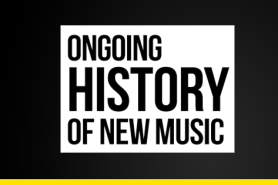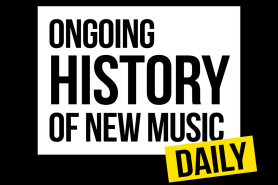Getting into digital music 25 years ago consisted of two things. If we weren’t illegally downloading songs via Napster, Limewire, Kazaa, or any of the other file-sharing programs, we were ripping CDs to our computers using a program like WinAmp or MusicMatch. Both were serviceable, but could make it tricky when managing your music library.
Then, on Jan. 9, 2001, Steve Jobs announced iTunes, which was trumpeted as the “world’s best and easiest to use jukebox software.”
Version 1.0, adapted from an earlier program called SoundJamMP that Apple had purchased and refurbished, was a sleeker version of WinAmp and its brethren. Initially, it was just a Mac product, but it was extended to Windows users in the fall of 2003.
By then, the iTunes Music Store had opened (born April 29, 2003), allowing people to buy complete, virus-free digital files of 200,000 songs from major labels for 99 cents each.
Things only got bigger from there. Labels realized that digital music was the future, and Apple by far offered the best option. More songs were added to the store. Digital rights management locks were eventually stripped away. Fans no longer had to buy the full album if they wanted just that one song.
Within a few years, the iTunes Music Store had cornered the market on digital music with a global market share of 70 per cent, making it the internet’s de facto music store. There was much written about the “long tail” model, and how songs would live forever online, available for purchase by all. As of 2014, the last time Apple broke out iTunes sales, 35 billion songs had been sold and downloaded through the store. That number is now obviously much higher.
Then the streaming era hit — hard.
When Spotify went online in 2008, people quickly realized that although 99 cents was dirt cheap for a song, free was even better. Spotify and its competitors remade the way music was distributed, discovered, consumed and shared. CD sales, already in a death spiral, fell further. And purchasing digital tracks? How quaint. Apple had to respond with Apple Music in 2015.
In 2019, rumours started that Apple was going to shut down iTunes completely after it shut down the iTunes app, folding everything into a new app called Music, which buried the store in the interface.
People feared that the download era was over and we were all being herded toward streaming, causing much panic among those who preferred to own their music rather than rent it. That never happened, of course, but you have to wonder how long Apple’s enthusiasm will last when it comes to running a digital music store.
Let’s look at some figures. As of this past week, Luminate, the monitor of such things, told us that Canadians have purchased 744,899 digital albums from all online stores so far this year, a 23 per cent drop from this point in 2024. Compare that to sales of a little more than a million CDs and 1.1 million vinyl albums. We’ve been buying fewer than 200,000 digital tracks a week for a while now, which is down about 16 per cent from last year.
So, how many people are still using the iTunes Music Store? Figures are a little hard to come by, but it appears that in America, monthly iTunes Store customers are down to about 11.1 million. Given that about ten times that number still subscribe to Apple Music for streaming, online radio, audiobooks and podcasts, store revenue is a shadow of its former self.
I, however, will never give up on iTunes. Never.
The idea of my music collection being held hostage by a company in exchange for a monthly subscription fee is anathema to me. Sure, streaming is great for auditioning songs and exploring music from the comfort of home, but I’m still stuck on the idea of possession and ownership. And because I need proper legal copies of songs for my work — (where do you think I get most of the songs for Ongoing History of New Music shows?) — the iTunes Music Store is the best and easiest source.
I also appreciate the effort Apple has made in upgrading audio quality. They’ve been offering lossless tracks (i.e., none of the annoying compression) since 2011. Spatial Audio songs sound fantastic, in many cases, even better than CD quality. Spotify has yet to upgrade from what might be compressed 256 or 320 kbps streams.
And I’m not alone. I asked people on X, Threads, and Bluesky why they still used the iTunes Music Store for tunes. I was flooded with hundreds of answers, 99 per cent in support of iTunes. I’m down with everything that was said.
- “I like to support the art. $1 a song isn’t terrible. I like having a copy on my phone without going through Spotify. I really miss the old-school iPod.”
- “I use it to blend personal library stuff (like Record Store Day vinyl releases and other totally legally acquired tracks) with my Apple Music streaming library.”
- “I love my iTunes, love having my playlist that I’ve created over the last 15 years. I like that I buy songs once but listen to them hundreds of times (or more).”
- “One-off song purchases for DJing.”
- “I use my iPod Nano (2nd gen!) at the gym to avoid online distractions.”
- “I have over a quarter million songs ripped to my iTunes digital library (mostly ripped from CDs). I find it’s a capable enough system to stream music around my home (via an Apple TV hooked into my receivers).
- “If I’m interested in something new, I will buy the album from iTunes as I no longer wanted to add discs to my oversized library.”
- “No requirement for WiFi! All devices sync immediately.”
But there’s a demographic component that’s worrying. Approximately 81 per cent of purchasers of music from iTunes are over 35. Many adopted iTunes more than two decades ago and aren’t interested in breaking the habit.
Meanwhile, the iTunes Music Store doesn’t seem to excite the young. Paid digital downloads are light-years off their radar. Gen Z is even souring on streaming and instead gravitating more to social media and YouTube for music.
However, many musicians prefer iTunes revenues. While streamers pay out pittances — fractions of a fraction of a cent — 70 per cent of the purchase price is sent the artist’s way. Even after the label, publisher, and everyone else take their cut, the artist makes substantially more per track sold through iTunes.
How long will Apple keep running the iTunes Music Store? The company won’t say, of course, but as long as there’s a market, it will stay online. Having it go dark is not a fait accompli. At least not yet. There are still plenty of use cases for the store. Many fans will not let it disappear without a fight.
Like I said in the headline: From my cold, dead hands.
© 2025 Corus Radio, a division of Corus Entertainment Inc.









 Ad Choices
Ad Choices